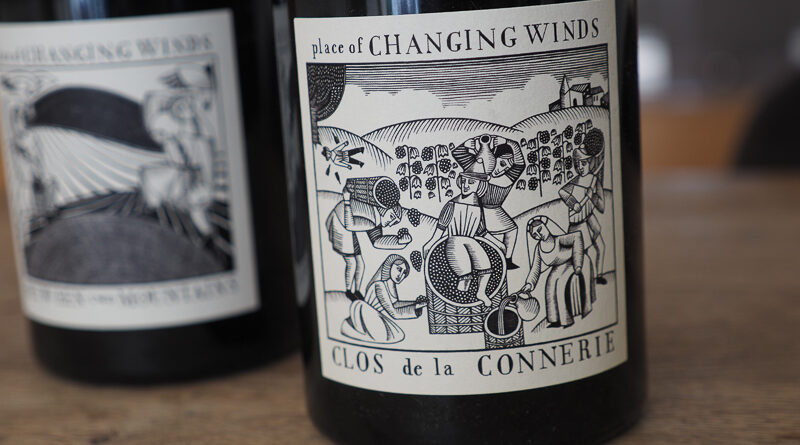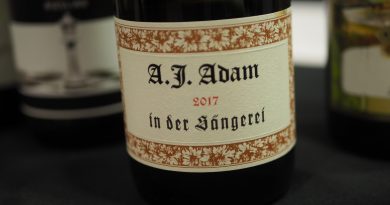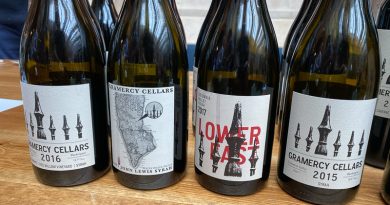New releases from Place of Changing Winds: a remarkable vineyard-based project in Australia’s Macedon Ranges
Website: https://www.placeofchangingwinds.com.au/
This is a remarkable project from Robert Walters, who for over 15 years has been wine buyer for Bibendum Wine Co. in Australia (no relationship with the UK entity). In the course of his work he’s dealt with many of the top growers in the classic regions, and he’s gleaned a lot of their knowledge. ‘This led me to develop an obsessive interest in the kinds of places and practices that lead to the world’s greatest wines,’ he says. And it spurred him to want to put this knowledge into practice.
After a protracted search for the right sight, he found a property in Bullengarook in the Macedon Ranges. It’s at 500 m altitude on the southern edge of the foothills of Mt Macedon, surrounded by forest. Overall, the property is 33 hectares, but only a small part of this is vineyard. The climate here is certainly cool (it’s not always possible to fully ripen Pinot here), with large diurnal variations, and rainfall of 700-900 mm. The ancient soils are quite rocky and consist of eroded quartz and sandstone with some clay and silt.
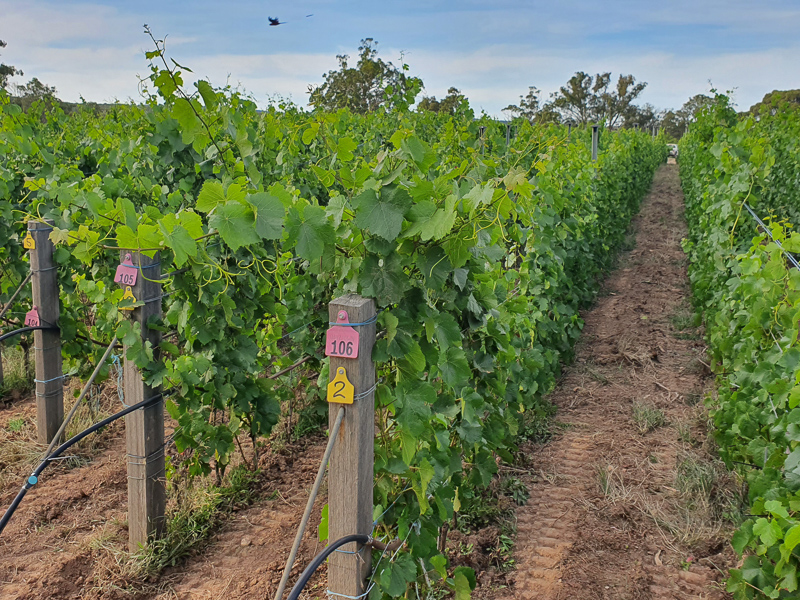
Between 2012 and 2018 Walters proceeded to plant what is one of the new world’s most remarkable vineyards, at planting densities ranging from 12 000 to 33 000 vines per hectare. To give you some idea of how unusual this is, typical planting densities in Australia are 1500-3000 vines per hectare, and in Burgundy – which is what we normally think of as high density – the vines are a metre apart with a metre between rows (10 000 plants per hectare).
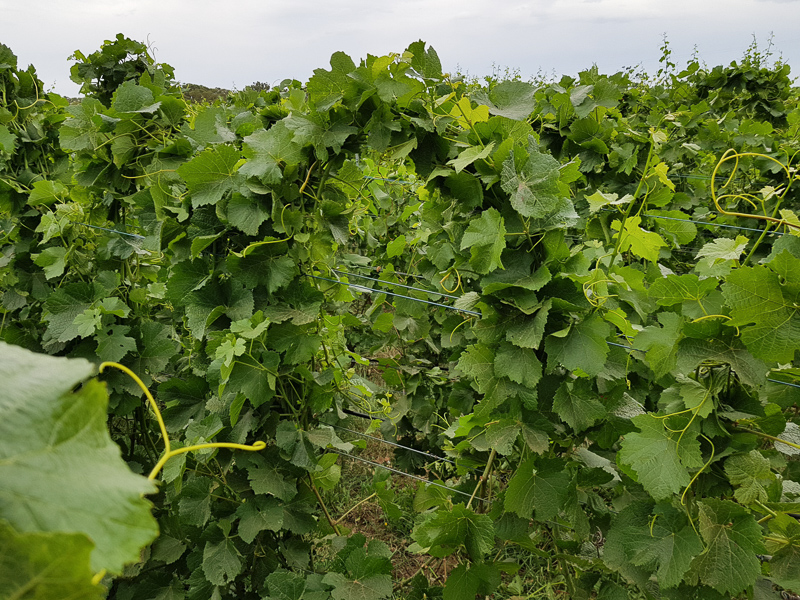
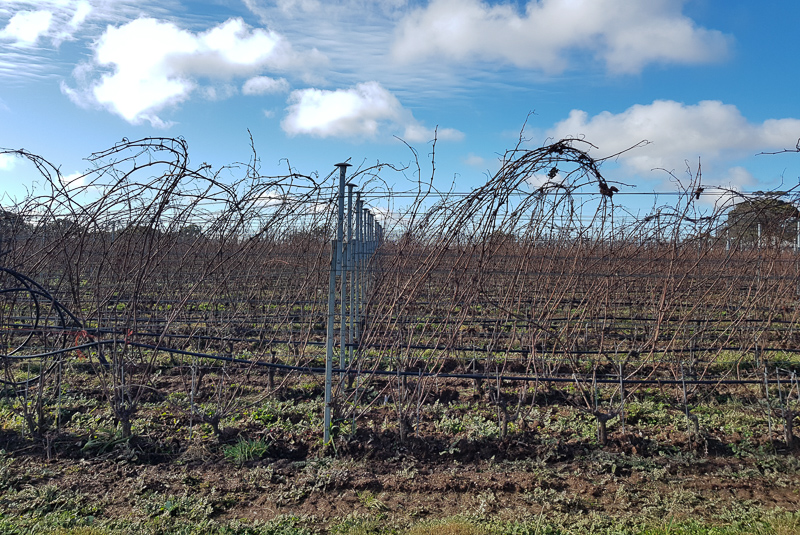
The vineyard is planted with nine different clones of Pinot Noir and Chardonnay, and is organically farmed. Some of the vines are ungrafted. The idea is to have no irrigation once the vines are established. The vines are pruned using the Poussard system that is becoming fashionable in Europe because it respects the sap flow of the vine and is thought to reduce the incidence of trunk disease. ‘Many of our vines are spur only, with no cane,’ says Walter, ‘like a two armed gobelet, and we also now have a section of the vineyard that is bush vine/gobelet proper.’ Tressage is also carried out: weaving the shoot tips with each other to avoid trimming the canopy.
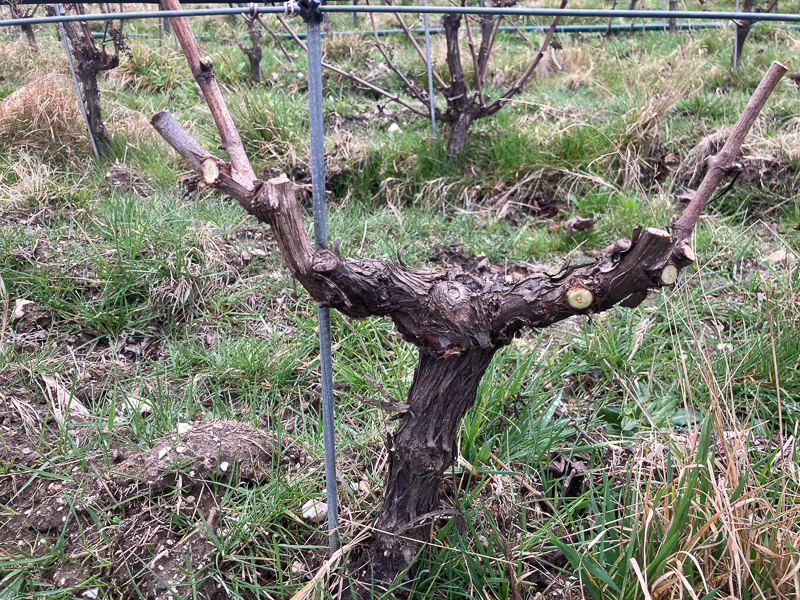
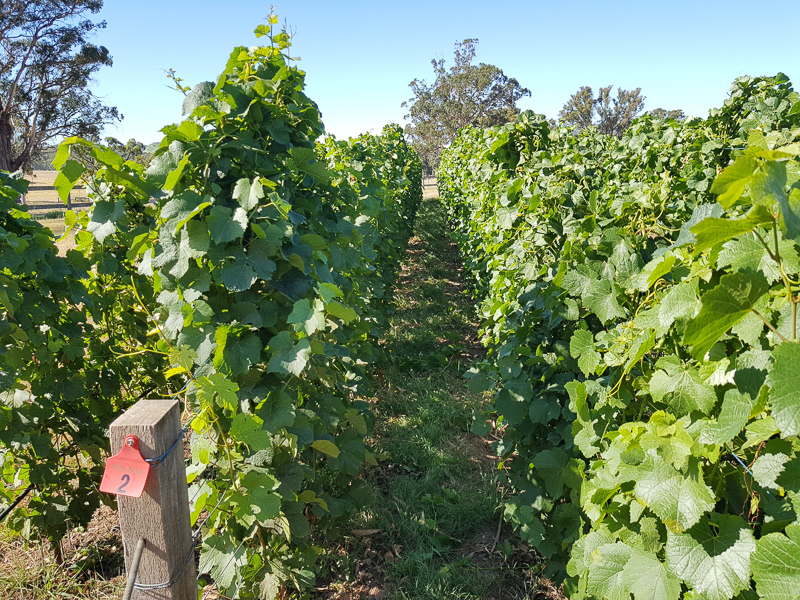
To suppress weed growth the soil is cultivated. ‘There is a lot of confusion around this practice,’ says Walters, referring to the fact that critics of cultivation say that it oxidises humus and is bad for soil microlife. ‘When it is done correctly, minimally and at the right times, we believe careful cultivation to be enormously beneficial to both the soil and the health of the vines.’

The overall method of farming is very costly because most work has to be done by hand. Walters has the equivalent of three full time people in the vineyard, including manager Remi Jacquemain, which is one person per hectare (3.1 hectares are under vine). Often in Australia it would be one person for 50 hectares.
THE WINES
Latest releases:
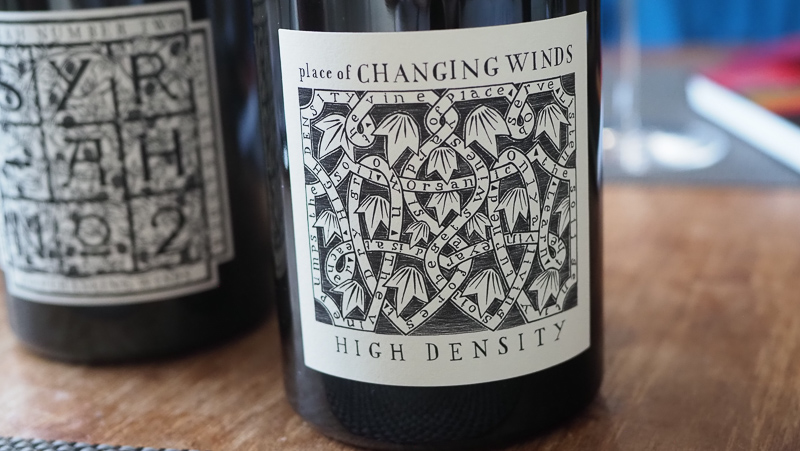
Place of Changing Winds High Density Pinot Noir 2021 Macedon Ranges, Australia
13.8% alcohol. This is a special wine from a remarkable site (cool, with good rainfall, and rocky soils), planted by Robert Walters in 2012 in the Macedon Ranges. This is an unusually high-density plantation, with 45 000 vines in 3.1 hectares, and the planting density ranges from 12 000 to 33 000 vines per hectare. This bottling comes from the 20 000 to 33 000 density plantings, and was less than 10% whole bunch, although some of the highest density fruit was manually destemmed with scissors, keeping the grapes on the pedicel. Aged for 19 months in Stockinger barrels (228, 500 and 600 litre), and unfined and unfiltered. Wonderful aromas of sweet, pure cherry and berry fruits with a liqueur-like sleekness, but also some appealing sappy green notes. There’s a brooding complexity on the nose, with an enticing mix of red cherries, herbs, iodine and spice. In the mouth this is sleek and full with lovely silky sweet cherries and plums, and nice sappy detail. Very fine and expressive, and with the tannins and acidity to age beautifully. Superb stuff. 96/100
Place of Changing Winds Between Two Mountains Pinot Noir 2021 Macedon Ranges, Australia
13.7% alcohol. Lovely aromatics here: sweet, floral slightly sappy cherry fruit with a lovely rounded texture on the palate. So sleek and elegant with pure sweet cherry and plum fruit, showing a silky mouthfeel. There’s a fine spicy white pepper finish with a bit of structure. 95/100
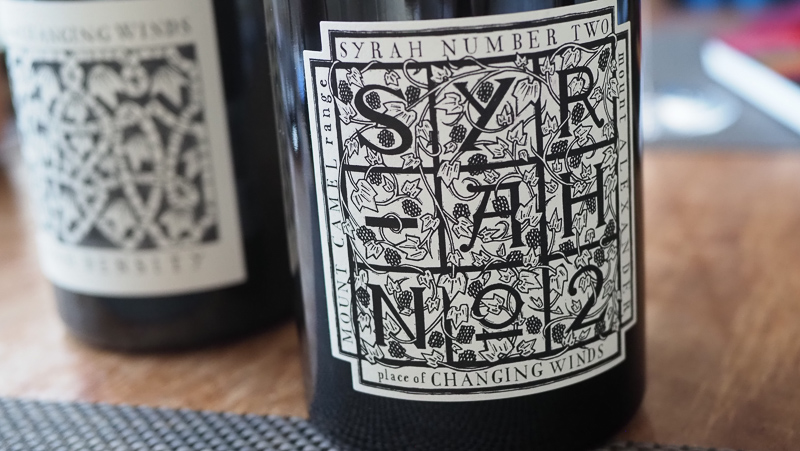
Place of Changing Winds Syrah Number Two 2021
13.5% alcohol. Floral aromatics of sweet black cherries, with some subtle pepper, meat and spice. The mouth is sweetly fruited with lush black cherry and olive fruit as well as a slight creamy richness. Hints of olive, too. 94/100
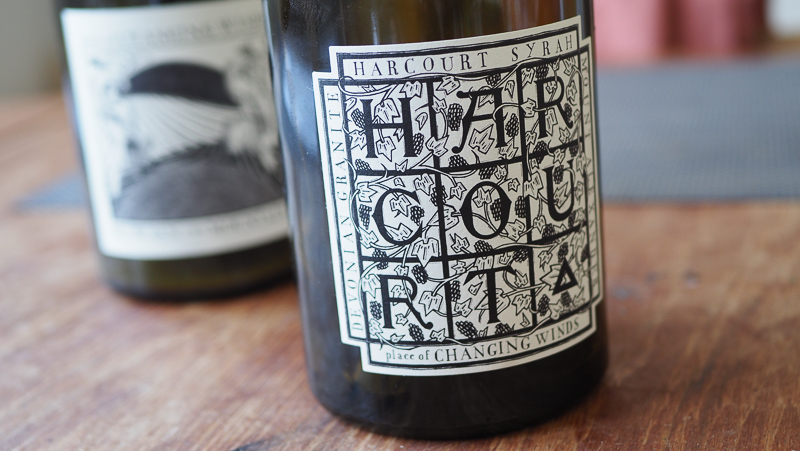
Place of Changing Winds Harcourt Syrah 2021 Mount Alexander, Victoria, Australia
13.9% alcohol. From Devonian granite soils, this has a lovely concentration of smooth ripe Syrah fruit. Black cherries, blackberries and pepper, with some gravel, graphite and iodine. The savoury notes complement the sweet fruit: this is brooding, ripe, but balanced. 94/100
Place of Changing Winds Harcourt Marsanne 2021 Australia
14.2% alcohol. From Devonian granite soils in Mount Alexander. With some undisclosed Roussanne in the blend, from the same site. Grapes were picked fully ripe, pressed hard, and sent straight to barrel (500 and 228 litre) for fermentation and aging. Natural malolactic. After twelve months in cask, the wine was racked to tank for an additional ten months before being bottled at the start of February 2023. A full yellow colour, this is a bold but balanced Marsanne with well defined aromatics of peach, ripe pear and some canteloup. The palate has remarkable density with concentrated fruit, verging on ripe tree fruits and melon, but also with some crystalline citrus and notes of honey and toast. There’s a smooth mid-palate, and a slight saltiness on the finish, with some pleasant bitter pithy notes adding freshness. This is superb. 94/100
Previous release:
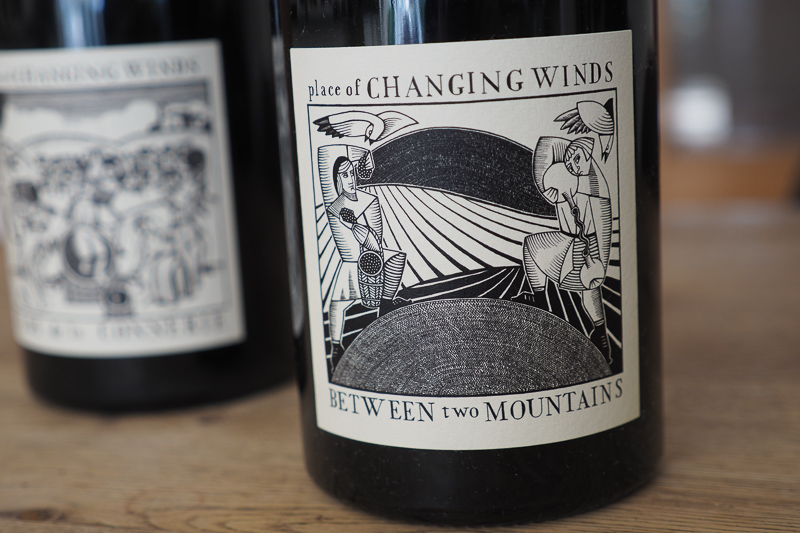
The Place of Changing Winds Between Two Mountains Pinot Noir 2019 Macedon Ranges, Australia
12.5% alcohol. From several parcels of vines with densities between 12 000 and 14 000 vines/hectare. MV6, 777 and 667 clones, 50% whole bunch, aged in 500 and 600 litre Stockinger casks. Minimal SO2, no fining or filtration, 1321 bottles made. This is just beautiful. It has a rich, sleek, smooth texture with some lushness and elegance to the red cherry fruit, yet also amazing freshness and a supple personality. Lying just under the fruit there’s some fine ginger spice character as well as some dried herb character. This is silky and elegant, but there’s some seriousness, too. So fine-boned but there’s structure, too, under all that sleek fruit. So impressive: it’s not their most expensive wine, but it’s still one of Australia’s very best Pinots. 96/100
Place of Changing Winds Clos de la Connerie Pinot Noir 2019 Macedon Ranges, Australia
12.5% alcohol. This is a section of the vineyard that forms a north/northeast facing amphitheatre with a planting density of 12 500 vines/hectare. One-third whole bunch, no fining or filtration, minimal SO2. Taut, complex black cherry fruit nose with some spicy notes shoring up the fruit. The palate is ripe and rich with smooth cherry and plum fruit, great concentration and some silkiness. There’s volume and density on the palate here, with the fruit supported by some fine tannin (it’s actually quite structured) and also subtle earthy, tarry hints. Fine green notes lurk in the background. Lovely depth and elegance to this complex wine, which shows good ripeness without losing balance. Remarkably rich given the relatively low alcohol content. Such an interesting wine, that needs some time to show its best. 95/100
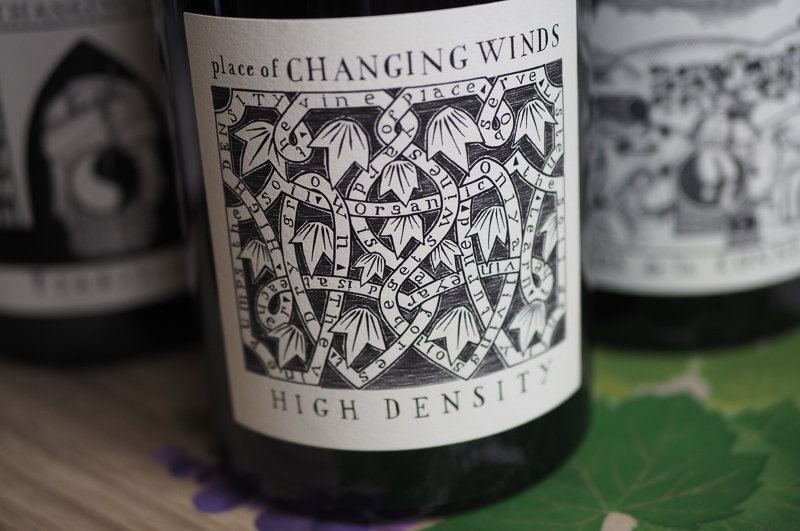
Place of Changing Winds High Density Pinot Noir 2019 Macedon Ranges, Australia
12.5% alcohol. Just 568 bottles are produced. Between 20 000 and 33 000 vines per hectare, with all the work done by hand and low yields of just 100-200 g per vine. Fully destemmed and then aged in one Stockinger and one Dominique Laurent cask. Minimal SO2. This has an amazing floral nose with sweet black cherries and stewed plums, and finely integrated green notes. The palate is fresh and supple with a grainy edge to it, and lovely sleek fruit. It’s fully ripe, but there’s also freshness and structure, with some complex spice and dried herb notes as well as black cherry and plum fruit. This has weight, but it also has softness and polish, and is so silky and refined in the mouth. Shows lovely freshness on the finish, with the structure to suggest that there’s a long future ahead. 96/100
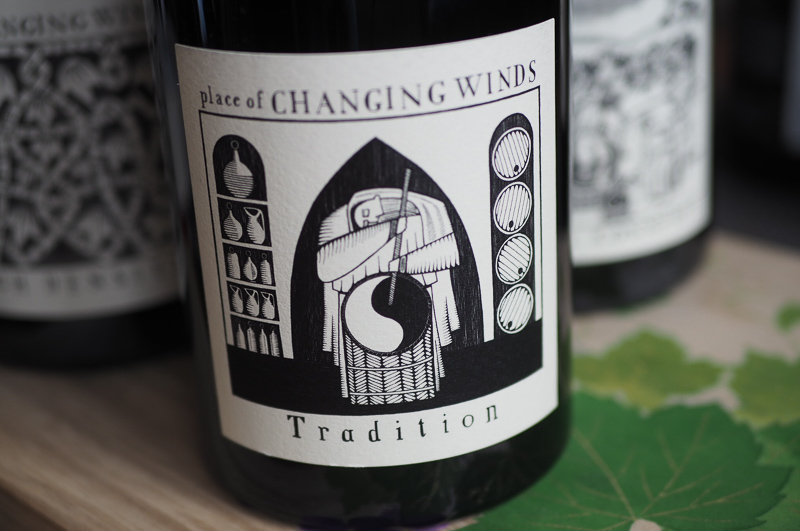
Place of Changing Winds Tradition Pinot Noir Syrah 2019 Macedon Ranges/Heathcote, Australia
12.5% alcohol. Sweet, ripe and enticing on the nose with some jammy blackberries and notes of pepper and dried herbs. The palate is ripe but lively with a smooth black cherry mid-palate book-ended by some liqueur-like richness and some lively, peppery spiciness. There’s some structure here, and a long, expanding finish with some juicy green notes, and a bit of prickly spiciness. So distinctive, and quite compelling. 94/100
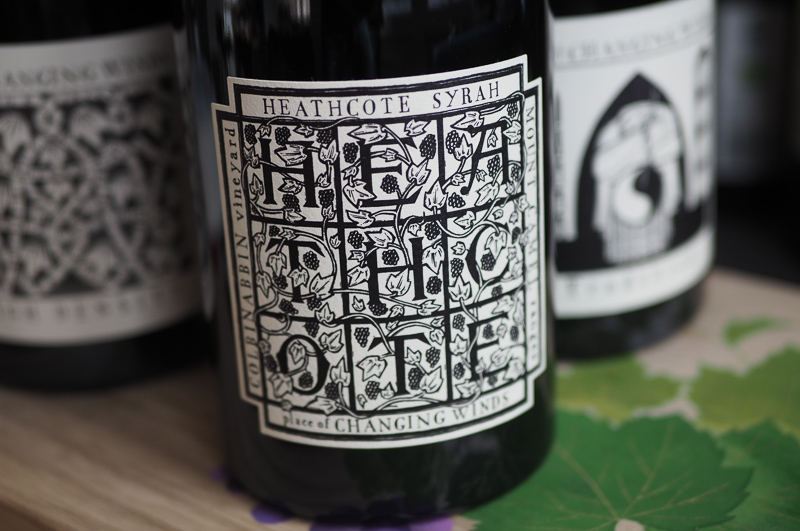
Place of Changing Winds Heathcote Syrah Colbinabbin Vineyard 2019 Australia
13% alcohol. This wine is a product of a long running collab with Alain and Maxime Graillot, initially made by Luke Lambert, and is where Rob Walters began his wine producing journey. Today it’s the team at Place of Changing Winds who make the wine. There’s an amazing elegance to the palate, which is soft and smooth, without being jammy. It’s a ripe, luxurious wine showing great promise, with a hint of meat and pepper savouriness alongside the ripe fruit. There’s a sleek ripe side to the wine but also some good definition and focus. Very fine, doing a really difficult job of balancing ripeness and freshness really well. 94/100
Find these wines with wine-searcher.com

